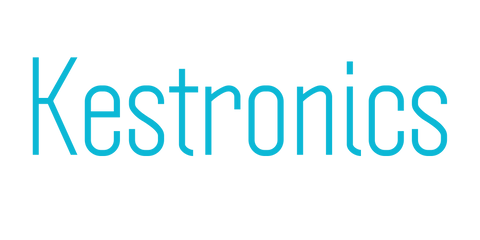Thermal printers have become an essential tool in various industries, including retail, logistics, healthcare, and manufacturing. Known for their efficiency and reliability, these printers are widely used for printing labels, receipts, and barcodes. However, like any technology, they come with both advantages and disadvantages. In this article, we will explore the pros and cons of thermal printers to help you determine whether they are the right choice for your business.
What Are Thermal Printers?
Thermal printers use heat to produce images on special paper or ribbons. There are two main types:
● Direct Thermal Printers: These printers use heat-sensitive paper, turning black when exposed to heat. They do not require ink or toner but can fade over time.
● Thermal Transfer Printers: These use a heat-sensitive ribbon to transfer ink onto the paper, creating a more durable print.
2. Types of Thermal Printers
Thermal printers come in various forms, each suited for different applications:
● Desktop Thermal Printers: Compact and ideal for office environments, retail, and healthcare settings where space is limited.
● Industrial Thermal Printers: Built for high-volume printing, often used in warehouses and manufacturing plants.
● Mobile Thermal Printers: Portable and battery-operated, commonly used in field services, logistics, and ticketing.
● Kiosk Thermal Printers: Integrated into self-service kiosks for printing tickets, receipts, or boarding passes.
3. Common Applications of Thermal Printers
Thermal printers are used across multiple industries for various purposes:
● Retail: Printing receipts and price tags.
● Logistics & Warehousing: Labeling shipments, inventory management.
● Healthcare: Printing patient wristbands, prescription labels.
● Manufacturing: Product labelling and asset tracking.
● Hospitality & Travel: Ticketing, boarding passes, and self-service kiosks.
Pros of Thermal Printers
1. High-Speed Printing
Thermal printers are much faster than traditional inkjet or laser printers. They can print labels and receipts almost instantly, making them ideal for high-demand environments like retail checkouts and warehouses.
2. Low Maintenance Requirements
Unlike inkjet or laser printers, thermal printers do not require ink cartridges or toners, reducing maintenance costs and the hassle of frequent replacements.
3. Cost-Effective in the Long Run
While the initial cost of a thermal printer may be higher, the lack of consumables like ink or toner makes them a more cost-effective option over time.
4. High Print Quality and Durability
Thermal printers produce clear and sharp images, making them perfect for barcodes and receipts. Thermal transfer prints are especially durable and resistant to smudging, fading, or water damage.
5. Compact and Space-Saving Design
Thermal printers are typically smaller and more compact compared to traditional printers, making them an excellent choice for businesses with limited space.
Cons of Thermal Printers
1. Higher Initial Cost
Thermal printers can be more expensive to purchase than inkjet or laser printers, which may be a drawback for small businesses with limited budgets.
2. Limited Colour Printing
Most thermal printers print only in black and white. Some models can print in limited colours, but they do not offer the same full-colour printing capabilities as inkjet or laser printers.
3. Special Paper or Ribbon Required
Direct thermal printers require heat-sensitive paper, which can be more expensive than standard paper. Thermal transfer printers need special ribbons, which add to the ongoing costs.
4. Print Fading Over Time
Direct thermal prints are susceptible to fading when exposed to heat, light, or chemicals. This makes them unsuitable for documents that need to last a long time.
5. Not Suitable for High-Volume Document Printing
While thermal printers excel at printing labels and receipts, they are not designed for high-volume document printing like office laser or inkjet printers.
7. Comparing Thermal Printers to Other Printing Technologies
Thermal printers offer unique advantages, but how do they compare to other printing methods?
● Thermal vs. Inkjet Printers: Inkjet printers provide high-quality colour printing but require frequent ink replacements, making them costlier in the long run.
● Thermal vs. Laser Printers: Laser printers are ideal for document-heavy environments but lack the speed and efficiency of thermal printers for labels and receipts.
● Thermal vs. Dot Matrix Printers: Dot matrix printers are useful for multi-part forms but are significantly slower and noisier than thermal printers.
Conclusion
Thermal printers offer many benefits, such as speed, low maintenance, and high-quality prints, making them an excellent choice for businesses that require frequent label or receipt printing. However, they also have limitations, such as limited colour options and potential fading of direct thermal prints. Understanding these pros and cons will help you make an informed decision about whether a thermal printer is the right investment for your needs.

